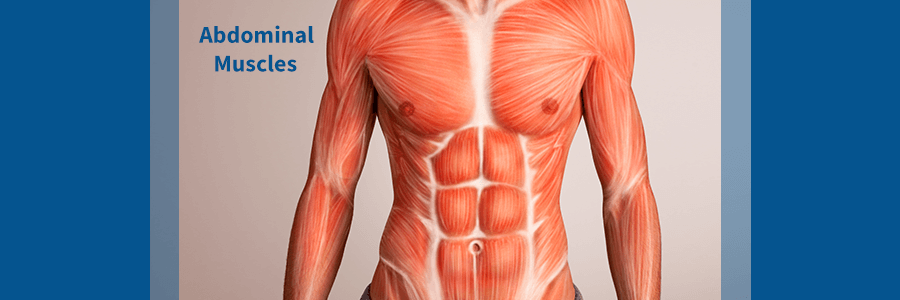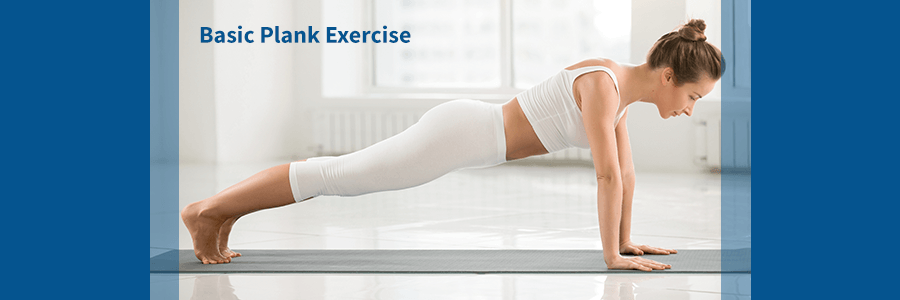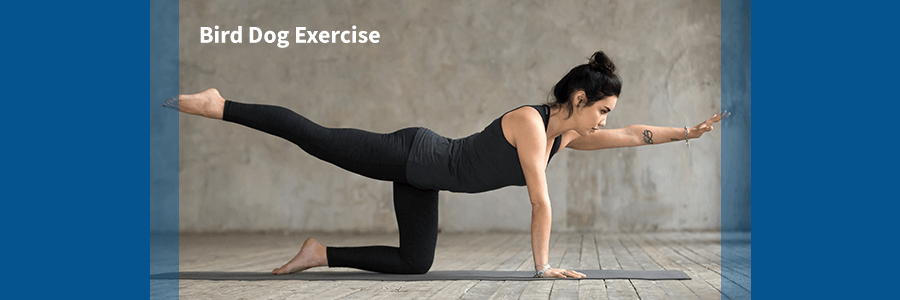Prevent Back Pain with a Strong Core

If you suffer from back pain, then you may find that strengthening your core can bring you some relief. When most people think about the core, they think of the abdominal area just below the ribs. While this area is an important part of the core, there are also other important areas to consider.
The core is made up of:
- The Transverse Abdominis: A deep muscle that wraps around the waist.
- The Erector Spinae & Multifidus: Muscles that run along the spine located between the spinal bones.
- The Rectus Abdominis: Frontal abdominal muscles.
- The Internal & External Obliques: Muscles that run along the side of the body.
- Muscles of the pelvic floor & diaphragm
- Gluteal muscles

The relationship between back pain and core strength
If you have weak core muscles, then your body relies more on passive rather than active structures. These passive structures include ligaments (the tissue that connects bones together) and spinal bones or discs. Discs lie in between the spinal bones and help with stability, but they can cause pain as well.
Research has shown that certain core exercises are not any more beneficial than total body exercises for lower back problems. Activity in general is great for treating lower back pain if performed correctly. That being said, core exercises do provide additional benefits.
Exercises
There are many, many different exercises that one can do to work their core. Here are just a few examples:
Plank
While kneeling on all fours, pull your abdomen in and step your feet behind you until your legs are straight. It is important to keep your neck straight and your hands directly under your shoulders. Hold your legs and abdomen tightly, and try not to let your lower back sag. Breathe and hold the position for 30 seconds. A modified version of this pose involves lowering the knees.

Side Plank
Sit on the floor with your feet stacked and your right hand below your right shoulder. Once you are in this position, lift your body while keeping your legs extended and abdominals engaged. Remember to keep your feet stacked. Breathe and hold the position. A modified version of this pose involves dropping your bottom knee to the floor. This is if you need extra support.
Upward Dog
With your head slightly lifted, lie face down with your hands under your shoulders. Keep your palms facing downward and point your toes. Once you are in this position, exhale and press through your hands and the tops of your feet. Next, you will raise your legs and body up until your arms are straight and your legs and body are no longer touching the ground. It is important that you keep your neck relaxed and your thigh muscles tight. Remember to breathe.
Bird Dog
First, kneel down on all fours. Using your arm, reach out in front of you, extend the opposite leg behind you, and flex your abs. Continue switching left and right.
Scissors
Lie down on your back with your legs pointed straight up above your hips and your arms at your sides. Press your lower back into the floor (preferably, into a cushioned mat) and flex your abs. Lower your left leg until it is a few inches from the mat. Raise your left leg up again, and then lower the right leg the same way you did with your left leg a few steps ago. As with bird dog, this exercise alternates between both sides.
You typically want to repeat bird dog and scissors in repetitions of ten or in three sets of eight. In the case of upward dog, one set of ten repetitions is fine. Plank exercises should be done in increments of 15 to 30 seconds.
Injury Prevention
It is important to remember that incorrectly performed exercises can lead to additional discomfort. This is especially true with any exercise that involves twisting. That being said, it is highly uncommon for a small set of exercises to seriously harm the body. The only exception is when extremely heavy weights are used. Remember, listen to your body’s cues (such as pain) during and directly after performing exercises. This is a sign that something is not being done correctly.
Because of its central location, the core stabilizes the body. In order to support the weight of the body (this includes the neck and back), it needs to be strong. Maintaining a healthy weight, regular physical activity, and keeping good posture will reduce the strain on your core and make its job easier. It is important to stretch and strengthen your core as often as you can. Even if you lead a sedentary lifestyle, stretching can be done even while sitting at a desk for just a few minutes a day. Lastly, getting 8 or more hours of sleep every night can provide immense relief. Like the mind, your lumbar spine needs to rest as well. Naturally, this is because it supports the weight of your back all of the time. So, make sleep a priority!
When To Seek Help
There are many different factors that cause lower back pain, as well as many different subtypes of lumbago. It is not a bad idea to visit an orthopedic doctor to assess back problems and to receive an evaluation or care plan. If your pain is affecting your ability to function, or you have experienced pain for an unusual amount of time, get in touch with New York City Spine. Dr. Daveed Frazier is a Harvard-trained, board-certified orthopedic spine surgeon and a leading expert in resolving lower back problems.

